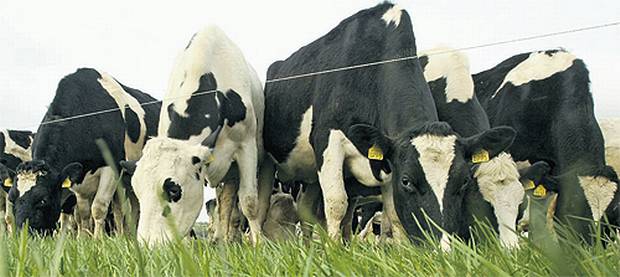
The critical need for increased funding for agricultural research because of the challenges associated with feeding the world’s rapidly expanding population and correctly identified food security as the main global challenge of the 21st century. As The challenge of feeding a population of >9 billion is daunting, and because arable land and clean water resources are already limited, it will only be possible through the application of agricultural innovations and increased efficiency of food production. However, he failed to mention the important role of animals, and we would therefore like to expand on that issue and several other critical issues.
Food security is defined by the WHO as “Access to sufficient, safe, nutritious food to maintain a healthy and active life”. Although the focus of discussions about food security is usually the developing world, where most of population growth is expected to occur, food security is equally important for the developed world. Globally, food insecurity currently affects nearly a billion people, including 20 million children aged <5 y who experience severe malnutrition, and is one of the “major causes of death and disability worldwide”. Similarly, in the developed world food security remains problematic; in the USA, for example, nearly 15% of households are food insecure.
Hunger is principally caused by poverty, which currently affects ∼15.8% (21.8% for children aged <18 y) of the population in the United States and represents the highest poverty rate since 1993 (6). Thus, 48.8 million US citizens live in poverty, which is nearly twice the total population of the 10 largest US cities [25.2 million]! In addition, 2.3 million American households, representing 2.8 million children, live in extreme poverty, meaning their income is ≤$2/d per person, which is the same definition used by the World Bank for the developing world.
Food insecurity affects especially children because undernutrition and malnutrition in childhood interfere with physical and mental development, thus compromising whole lives. Assuring adequate nutrition from an early age on is therefore a prerequisite for a society’s prosperity”. In addition, because three-fourths of the poor in the developing world still live in rural areas, and most of these are smallholder farmers, growth in the agricultural sector may be the most effective way to reduce poverty.
The Role of Animals and Animal Products
Importantly, although often overlooked, meat, milk, eggs, and other animal products, including fish and other seafoods, will play an important role in achieving food security for several reasons.
First, animal products are an important source of high-quality, balanced, and highly bioavailable protein and numerous critical micronutrients, including iron, zinc, and vitamins B-12 and A, many of which are deficient in a large portion of the world’s population. Thus, moderate consumption of animal-sourced foods plays an important role in achieving a nutritionally balanced diet, especially in the developing world.
Second, because they are recognized as high-quality foods, global demand for animal products is almost certain to continue to increase dramatically. The drivers of the increased demand for animal products include not only population growth but also increased affluence, especially in the developing world, where most of the increase in population will occur.

Third, farm animals are critical to a sustainable agricultural system and especially for smallholders who comprise most of the world’s farmers. Farm animals contribute not only a source of high-quality food that improves nutritional status but also additional resources such as manure for fertilizer, on-farm power, and other by-products, and, in addition, provide economic diversification and risk distribution. Moreover, increased efficiencies in the past several decades through genetic selection and improved management technologies has saved a large amount of resources, including water and land, and have substantially reduced the carbon footprint of animal production.
Fourth, ruminants such as buffalo, cattle, goats, and sheep, efficiently convert the forages from grasslands into high-quality animal products, and grazing also can promote the health and biodiversity of grasslands if managed appropriately. This is important because grassland pastures cover >25% of the Earth’s land surface and, despite being home to nearly a billion people, comprise primarily marginally or non-arable land.
However, sustainable farm animal production will also require a more complete understanding of their impact on the environment. For example, a report by the FAO of the UN estimated that livestock, and especially ruminants, contribute as much as 18% of greenhouse gas emissions, but others have suggested that this is a gross overestimate and that the actual value may be as low as 3%. Regardless, as farm animal production continues to increase, we need to be concerned with not only greenhouse gases but also the impact of farm animals on soil, water, and biodiversity. We also need to better understand the specific role of animal products in the diet in the global increase in noncommunicable diseases such as type 2 diabetes, obesity, and cardiovascular disease, because noncommunicable diseases are now responsible for more deaths worldwide than all other causes. In this regard, recent reports from the National Research Council and from the Office of Disease Prevention and Health Promotion, Department of Health and Human Services, argue strongly for renewed focus, including additional research, on these controversial and critical issues.
Conclusion
Solving the problems and overcoming the obstacles to sustainable food security, although daunting, are not options, because food security is critical not only to national security but also to global stability. Feeding the world’s rapidly expanding population can therefore rightly be viewed as the main global challenge of the 21st century. Animals will play an important role in meeting this challenge.